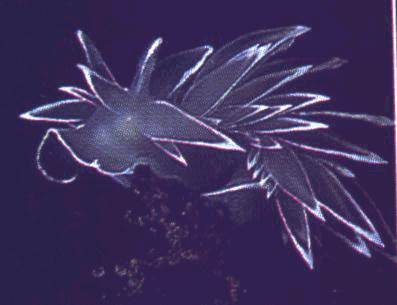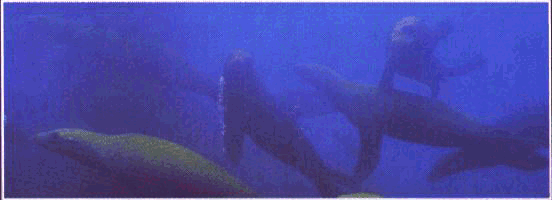

The charm and beauty of the Monterey Peninsula stretches far beyond the water's edge. The sea that surrounds the peninsula is charged with life. There are more than 60 dive sites, along with shipwrecks and scores of unspoiled pinnacles that attract an estimated 65,000 divers a year. Harbor seals, sea lions and otters are commonly seen playing in one of the most bio diverse marine environments in the world. Among the several major habitats represented are sandy sea floors, kelp beds, wharf pilings' shale beds and rocky reefs. The rich and diverse underwater environment in a small geographic area makes Monterey an incredible place to dive.
Most of the diving is easily accessible from shore so beach diving is very popular. Dive sites are clearly marked and entry is generally easy. A variety of dive boats is available and they frequent the less accessible sites. Boat diving is required to reach the offshore pinnacles. You can expect water temperatures to average 50 to 54F in the winter and 56 to 60F in the summer, with average visibility ranging from 20 to 35 feet but occasionally reaching 80 feet. The waters may be chilly compared to tropical climates hut the cooler temperatures offer a unique aquatic environment that warm water divers cannot normally experience.

The majority of dive sites are either in Monterey Bay or Carmel Bay. The entire coastal region is part of the Monterey Bay National Marine Sanctuary, which covers about 4,000) nautical square miles and 300 miles of coastline. The sanctuary was formed in 1992 to help protect and preserve the natural resources.
In the Monterey Bay, dive sites are normally protected from the prevailing northwest swells. Beneath the surface lies a huge canyon that is 13 miles wide and I mile deep. The geography of the submerged canyon, combined with weather conditions. help create a wide variety of habitats. Warm and cold waters mixed by wind and ocean currents provide nourishment to support these habitats. A few of the popular dives within this bay include the Breakwater, which is often used for training and night diving because the ocean is generally calm and there is a concrete stair entry. Sea lions and tube anemones are found on the sandy sea floor and octopus, monkey face eels and wolf eels can be seen among the rocks. Playful sea lions and sea otters also frequent the area.

McAbee is another popular training site. A thick kelp forest and rocky reef provide home for a multitude of marine creatures, including sea hares, rockfish, crabs and anemones. Lover's Cove offers several sites. There arc shallow reefs covered with red turf algae, nudibranchs and sea grapes. The marine life in this cove is colorful and varied. At Lover's Deep Reef bat rays and leopard sharks are common.
The dive sites in Carmel Bay are more exposed to weather than those in Monterey Bay. Because of this, the water tends to be a few degrees colder but the visibility can also be better. At the northwest tip of Carmel Bay, almost a mile from shore, are the Pinnacles. This spectacular site is only accessible by dive boat. There are two submerged mountain like formations that create interesting topography. There is a large kelp bed and numerous schools of fish live just beneath the canopy. This is an excellent spot for wide angle and macro photography.
Copper Reef (named for the green copper on the house that marks the site) is considered an advanced dive because northwest swells can make entries and exits quite treacherous. The beach slopes to shallow reefs where granite boulders and sand channels are covered with a heavy kelp canopy. An abundance of marine life can be found hidden among the ledges and schools of rockfish swim freely through the kelp.
One of the best known beach dives off the entire peninsula is Monastery Beach. Divers should be experienced in surf entries and exits because the surf can be challenging in this area . The site features a dense kelp bed with rich invertebrate life. Occasional sightings of whales' dolphin and blue sharks have been reported.
Point Lobos offers a near pristine diving environment. Two large caves and some interesting relics of the old whaling days can be found beneath the surface.
The Monterey Bay Peninsula offers a wide variety of unique and exciting dives. The experience of a kelp forest is like floating through a redwood forest and having otters' sea lions and seals drop in unexpectedly from above. You never know what awaits you below the surface.
Please mail your Feedback to
Terry Ridgway
Last Updated: